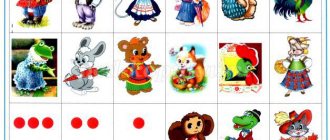Excellent tongue twisters for diction: Pxhere Correct articulation is a prerequisite for quality interpersonal communication. To achieve correct pronunciation of sounds, you need to train your speech apparatus. The best assistants in this matter are tongue twisters for diction. They are memorized and repeated with children, but they are also useful for adults, especially those whose profession is related to rhetoric - teachers, announcers, actors, PR managers, etc. We offer a selection of tongue twisters with which you will achieve perfect articulation.
Tongue twisters - what are they?
A tongue twister is a naive and primitive text that combines intricate and difficult combinations of syllables and words. They are often confused with proverbs. But proverbs and sayings carry worldly wisdom and experience. Tongue twisters are not so deep in meaning - they are intended to train diction and eliminate speech defects. Funny content allows you to quickly memorize tongue twisters - daily lessons will be fun.
Tongue twisters can be short and simple - they are used for activities with children. Speakers and public figures need to master long and complex difficult words. Children's and adult tongue twisters often differ only in meaning, since speech problems do not depend on age. The longest and most complex tongue twisters are designed to work on 3-5 complex sounds at once.
Before starting classes, you need to objectively assess problematic sounds in speech. Each tongue twister is designed to improve a specific combination of sounds. Therefore, after analyzing speech, you can focus your efforts on problematic sound combinations.
Using tongue twisters, they improve diction, articulation, and speech rate. People who naturally speak quickly should pronounce difficult words slowly, emphasizing each sound clearly.
The longest and most complex tongue twister is Liguria. This is a logical story made up of popular proverbs. It is used to set diction for announcers.
On Thursday the 4th, at 4 and a quarter o'clock, the Ligurian traffic controller was regulating in Liguria, but 33 ships tacked, tacked, but never managed, and then the protocol about the protocol was recorded by the protocol, as the interviewed Ligurian traffic controller was eloquent, but not clear reported, and so reported about the wet weather that, so that the incident did not become a candidate for a judicial precedent, the Ligurian traffic controller acclimatized in unconstitutional Constantinople, where the tufted laughter laughed and shouted to the Turk, who was blackly stoned with a pipe: don’t smoke, Turk, pipe, better buy a pile peak, it’s better to buy a pile of peak, otherwise a bombardier from Brandeburg will come and bombard him with bombs because some black-snouted guy dug up half his yard with his snout, dug up and dug up; but in fact the Turk was not in the business, and Klara the King was sneaking to the stall at that time, while Karl was stealing corals from Klara, for which Klara stole the clarinet from Karl, and then in the yard of the tar widow Varvara, 2 of these thieves stole firewood; but it’s a sin - not laughter - not to put it in a nut: about Clara and Karl in the darkness, all the crayfish were noisy in a fight - so the thieves had no time for the bombardier, but also not the tar widow, and not the tar children; but the angry widow put the firewood in the barn: once firewood, 2 firewood, 3 firewood - all the firewood could not fit, and 2 woodcutters, 2 woodcutters, for the emotional Varvara, expelled the firewood across the width of the yard back to the wood yard, where the heron withered, the heron withered, the heron died; the heron's chick clung tenaciously to the chain; well done against the sheep, and against the well done the sheep itself, to which Senya carries the hay in a sleigh, then Senka carries Sonya and Sanka on a sled: the sled hops, Senka sideways, Sonya head on, everything into a snowdrift, and from there only a head of bumps knocked him down, then Sasha went along the highway, Sasha found the sachet on the highway; Sonya - Sashka’s friend was walking along the highway and sucking a dryer, and besides, Sonya the turntable also had 3 cheesecakes in her mouth - exactly like a honey cake, but she had no time for a honey cake - Sonya, with the cheesecakes in her mouth, would over-mix the sexton, - over-mix: it buzzes like ground beetle, buzzing and spinning: was at Frol's - Frol lied about Lavra, will go to Lavra at Frol Lavra will lie that - the sergeant with the sergeant, the captain with the captain, the snake has a snake, the hedgehog has a hedgehog, and a high-ranking guest has taken away from him a cane, and soon again 5 guys ate 5 honey mushrooms and a half-quarter of a quadruple of lentils without a wormhole, and 1666 pies with cottage cheese from whey from yogurt - about all of that, the bells were ringing with groans, so much so that even Konstantin - a Salzburg unpromising man from - under an armored personnel carrier he stated: just as all the bells cannot be re-ringed, all the tongue twisters cannot be repeated, all the tongue twisters cannot be re-spoken; but trying is not torture.
Articulation gymnastics
Articulation teaches you how to position your tongue and lips correctly and direct the air flow. Gymnastics prepares the articulatory apparatus for pronouncing complex tongue twisters.
You need to exercise daily for 3–5 minutes. Perform exercises while sitting, back straight, muscles relaxed. Carry out gymnastics in front of a mirror to control the correctness of the exercises. Perform each exercise until the facial muscles are slightly tense.
Basic exercises:
- Smile widely, expose your upper and lower teeth, hold the position for 10 seconds.
- Pull your lips forward, blowing on the invisible fluff.
- Alternate the first and second exercises at a fast and slow pace. The lower jaw should remain motionless.
- Open and close your mouth in a wide smile.
- Smile, open your mouth slightly, put your wide tongue on your lower lip.
- Open your mouth, stick out your tongue, stretch out the tip - the tongue becomes narrow.
- Alternate wide and narrow tongue at a slow and fast pace.
- Raise the tip of the tongue by the upper front teeth.
- Fix the tongue behind the lower front teeth.
- Move your tongue up and down and hold it behind the upper and lower teeth for 2 seconds.
- Lower the tip of your tongue and move it deeper into your mouth. Alternately bring the tongue closer to the right and left front incisors.
Such gymnastics is the best practice for mastering the basic correct positions of the lips and tongue.
Reviews and comments
You can leave a comment or review, or share tongue twisters below.
We also recommend reading:
- Storytelling
- Meditation with mantras
- How to teach a child to pronounce the sound “R”
- George Orwell's 5 Rules for Those Who Want to Learn to Write
- Development of speech culture
- Oratory: exercises
- How acting skills help in everyday life
- How to teach a child to read: rules, tips and tricks
- Difficult words in Russian: overcoming difficulties together
- Top 5 most important soft skills for every child
- 20 interesting facts about the Russian language
Key words:1Rhetoric
Articulation exercises
Tongue twisters are aimed at improving the pronunciation of consonant sounds. But learning to speak tongue twisters correctly is impossible without knowing the basics of articulation of vowel sounds. These rules will teach you to pronounce sounds clearly, which will make it easier to pronounce complex sound combinations in difficult words.
Rules for the articulation of vowel sounds:
- The sound "a". Open your mouth in the form of a wide ring, place 2 fingers folded on top of each other between your teeth. Cover the lower teeth with your lip, the upper teeth are open. Inhale - hold your breath - while exhaling, make a sound very quietly.
- The "u" sound. Pull your lips forward with your proboscis. As you exhale, pronounce the sound for as long as possible.
- The "o" sound. The lips are folded into a ring, slightly extended forward and stretched. Place your thumb between your teeth. The air should pass into the gap between the teeth and not rest against the palate and teeth.
- The sound is "y". Place the little finger between the teeth, the lips are stretched, the lower jaw is slightly pushed forward. Air passes clearly between the teeth.
- The "i" sound. Place the tip of your little finger between your teeth. As you exhale, make a sound. The air must pass clearly between the teeth, otherwise whistling will be heard.
Which tongue twisters are suitable for improving the diction of adults
It’s better to start improving your diction with short tongue twisters. This will make it easier for you to remember and pronounce them. And also, you will be able to control your breathing, and the entire speech will be spoken in one breath.
For example, you can use the following:
- Zyamka chewed suede, Zyamka chewed suede in the castle.
- In the hut, a yellow dervish from Algeria rustles his silks and, juggling with knives, eats a piece of fig.
- The exhibitionist has small biceps.
- Underqualified.
And only when you clearly pronounce all these phrases, following our advice, will you notice the first results within a week.
How to practice
In order for the results of the training to be noticeable, the following rules must be followed:
- recite tongue twisters regularly - daily 2-5 times for 10 minutes;
- reminders – print out 3–5 tongue twisters on a sheet of paper, hang them in visible places;
- changes - tongue twisters should be changed every 10 days to prevent the articulation apparatus from becoming accustomed.
You should not immediately try to pronounce the tongue twister quickly. You need to pronounce each word slowly and rhythmically, to understand the meaning of the difficult phrase. Increase the pace gradually, trying to pronounce the phrase in one breath. Pay special attention to the clear pronunciation of endings - activate consonant sounds, not make them heavier.
Before starting classes, do a light warm-up. Say the sound “g” and “k” three times. Then, with your mouth half open, pronounce the vowels “a”, “o”, “e” - each sound 3 times. Rinse your mouth with air to relax your muscles.
A mirror and a voice recorder will help you improve your diction. You should silently pronounce the tongue twister in front of the mirror, watching your articulation. Then pronounce the difficult phrase in a whisper, while all sounds should be understandable and audible.
Each lesson must be recorded with a voice recorder. This will allow you to hear how your diction is improving and what points to pay attention to.
In the future, you need to pronounce tongue twisters while moving - dancing, squatting. This will help diversify your classes and teach you to maintain pace and breathing.
How to improve speech and diction using tongue twisters?
Tongue twisters, which, as they say, “can break your tongue,” are an excellent exercise for developing diction and other vocal skills. Pronouncing them is useful not only for children in order to pronounce sounds correctly, but also for professional actors, announcers, TV presenters and anyone who would like to speak beautifully and clearly.
This is an effective method of developing diction, getting rid of tongue-tied speech, speaking too fast or, on the contrary, slow.
The correct technique for pronouncing a tongue twister is as follows: first, the tongue twister is pronounced clearly and slowly, and later, constantly increasing the pace and repeating the same thing many times as clearly and separately as possible.
Tongue twisters, which, as they say, “can break your tongue,” are an excellent exercise for developing diction and other vocal skills
Complex tongue twisters
- Watermelons were being reloaded from truck to truck. During a thunderstorm, the body fell apart in the mud from a load of watermelons.
- Sixteen mice walked and six found pennies, and the mice, which are worse, noisily fumble for pennies.
- The Staffordshire Terrier is zealous, and the black-haired Giant Schnauzer is playful.
- In Kabardino-Balkaria, valocordin from Bulgaria.
- De-ideologized, de-ideologized, and pre-ideologized.
- Their pesticides are not comparable to ours in terms of their pesticide effectiveness.
- Coconut cookers boil coconut juice in coconut cookers.
- The workers privatized the enterprise, privatized it, but did not privatize it.
- Lilac teeth picker.
- The fluorographer was fluorographing the fluorographer.
- I'm a vertical climber. I can twist my stump, I can twist my stump.
What is the difference between tongue twisters and tongue twisters?
Pure tongues are used in children's speech therapy to improve pronunciation of sounds and their automation. They are based on the repetition of consonant sounds in various combinations with vowel sounds. They need to be spoken in different ways - loudly, quietly, quickly, slowly. You can do the exercises while listening to music, which will help instill in your child a sense of rhythm.
Whistling sounds need to be worked on with children aged 3-3 years. Hissing and the sound “l” - at 4–5 years. Sound “r” – 5–6 years. Pure twisters are also useful for adults, as a warm-up before tongue twisters.
Sound "s"
Sa-sa-sa, sa-sa-sa - Sonya has a long braid.
So-so-so, so-so-so - Sonya rolls the wheel.
Os-os-os, os-os-os - they picked up a vacuum cleaner.
As-as-as, as-as-as - we drank delicious kvass in the evening.
Sound "z"
For-for-for, for-for-for - the horned goat is coming.
Zu-zu-zu, zu-zu-zu - tie the goat quickly.
Uz-uz, uz-uz-uz - I was cutting a watermelon with my dad.
Az-az, az-az-az - a diver is visible in the sea.
Sound "ts"
Tsa-tsa-tsa, tsa-tsa-tsa - look, a sheep is running.
Tso-tso-tso, tso-tso-tso - the bird sat on the porch.
Tsuk-tsik-tsik, tsik-tsik-tsy - the starlings will soon arrive.
Ets-ets-ets, eets-ets-ets - we bought a sweet candy.
Sound "sh"
Sha-sha-sha, sha-sha-sha - porridge with butter is good.
Shu-shu-shu, shu-shu-shu - I’m rushing to the skating rink now.
Ash-ash-ash, ash-ash-ash - the children hid in the hut.
Ush-ush-ush - took a shower in the morning.
Sound "zh"
Zha-zha-zha - the toad met a snake.
Zhi-zhi-zhi - how funny walruses are.
Zhu-zhu-zhu - I won’t tell you the secret.
Already, already, we lost our luggage.
Oh-oh-oh – he looks like his parents.
Sound "ch"
Cha-cha-cha, cha-cha-cha - car, dacha, tower.
Chi-chi-chi, chi-chi-chi - there are bricks at the market.
Chu-chu-chu, chu-chu-chu - I cry, I nurse, I laugh.
Ach-ach-ach, ach-ach-ach - tea, Easter cake, kalach.
Procedure for working with tongue twisters for children and adults
First, take short, rhyming, easy-to-understand phrases to work on. When you start studying them with your child, it is best to read syllables first, then whole words, and finally the whole thing. If it doesn’t work out, then don’t scold your child.
Leave your studies for a while. Gradually return to them. Subsequently, everything will begin to work out for him. At this moment you should praise the child, this will give him self-confidence and develop even more desire.
As for adults and older children, at the first stage you should work with hissing and dull sounds. Let us remind you that these are “p”, “t”, “w”, “s”.
The second stage involves working with whistling and voiced “ts”, “ch” and “sh”.
And finally, work with the third group - with sonorant sounds “m”, “n”, “l”, “r”.
Monitor yourself, record it on a voice recorder and listen to it. When you notice which letters and sounds you have errors with, there may be defects, work with them more.











